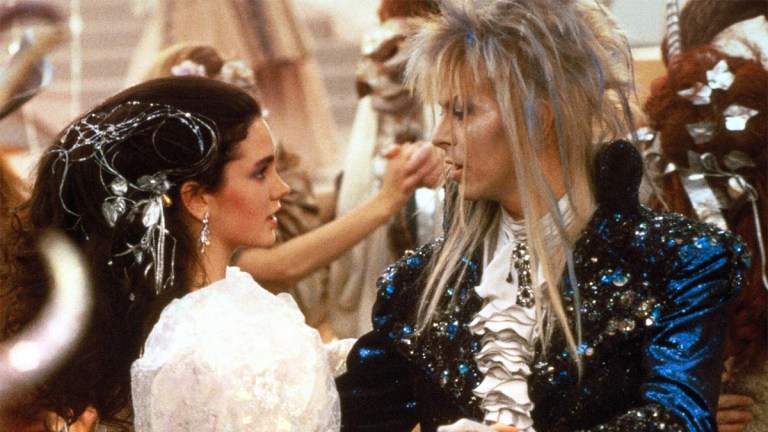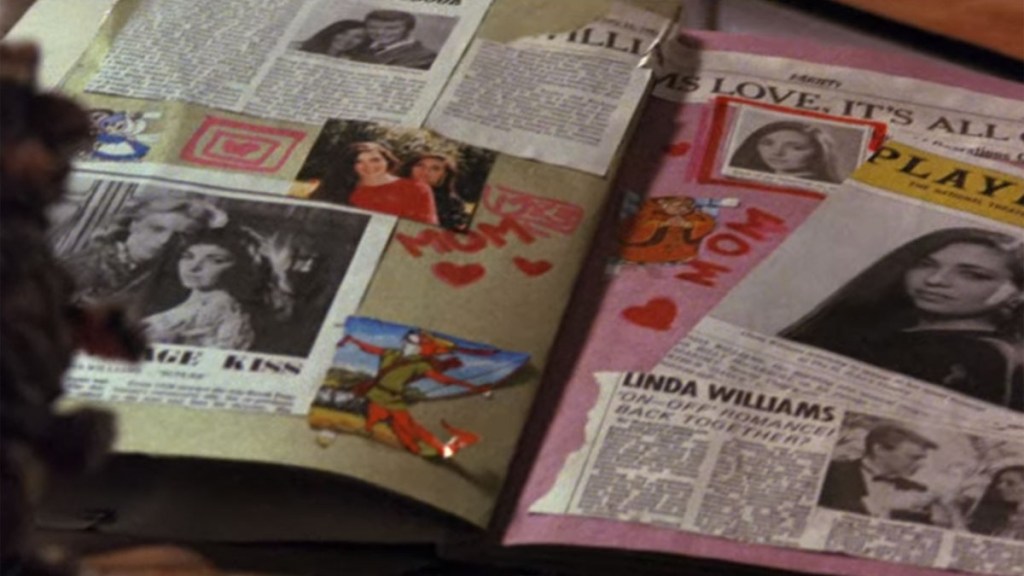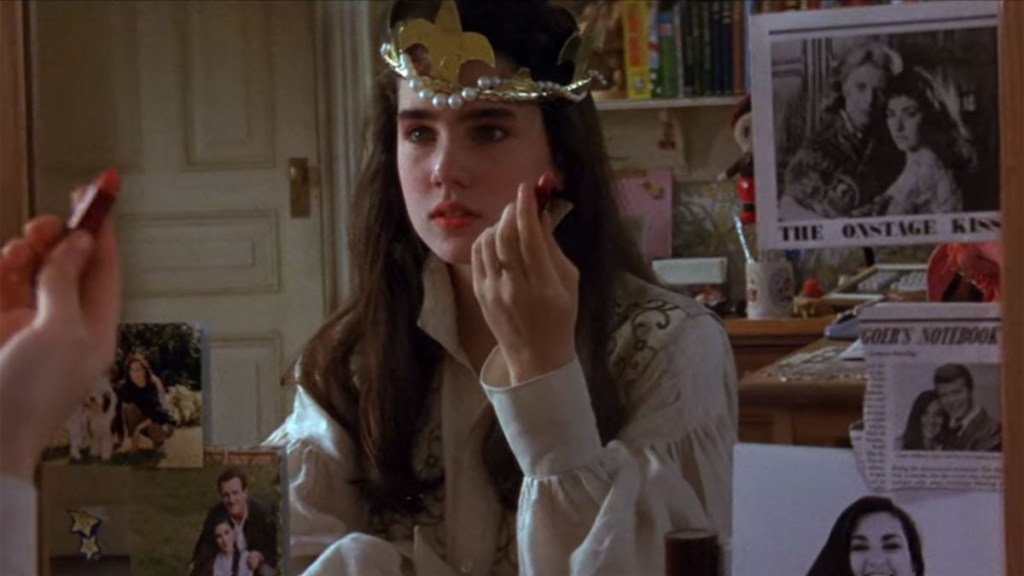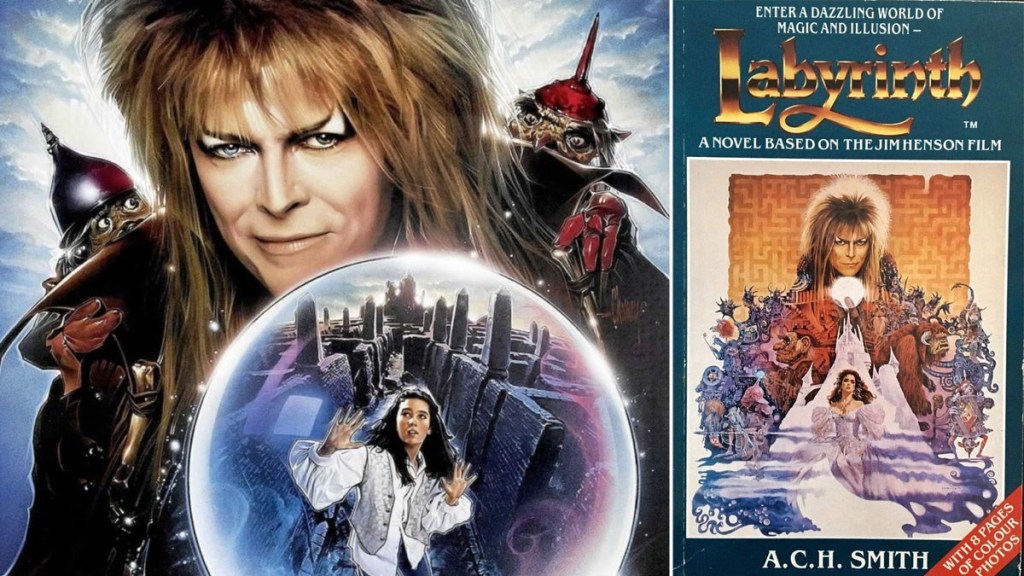Labyrinth: the Unsettling Second Character Played by David Bowie
Goblin King Jareth isn’t David Bowie’s only role in 1986 cult classic Labyrinth, he also makes a brief appearance as ‘real-world’ character Jeremy…

Not everything we enjoy is good for us. A chocolate-filled doughnut, for instance, can be delicious even while it crams our arteries with trans fat. The simple fact of knowing that something is unhealthy doesn’t stop it from being fun, which is to say that it’s still okay to love Jim Henson’s 1986 cult kids’ film Labyrinth while acknowledging that its sexual subtext is creepier than a drunk uncle on a camping trip.
It’s not as if nobody noticed the vibe between lead characters Sarah and Jareth at the time, or in repeated viewings since. Like Bowie’s codpiece, it stares you in the face all the way through the film. Jareth’s a 300-year-old Goblin King (played by a 38-year-old pop star) who wants to live within 15-year-old Sarah. Jareth spies on Sarah, comes into her bedroom, drugs her, dances with her, and promises to be her slave if she’ll love him, fear him and do as he says. Their dynamic is wrong in every size and colour, and – depending on whether you’ve spotted the other character Bowie plays in the film – could be about to get a little bit more wrong.

The events of Labyrinth are a fantasy that takes place in Sarah’s mind. Using the childhood dolls, stories and ornaments spotted around her bedroom in the early scenes (Hoggle and Ludo toys, a Goblin King statue, a wooden labyrinth game, storybooks from Snow White to Alice’s Adventures in Wonderland…), Sarah invents a scenario in which she’s a put-upon fairy tale hero who saves her baby brother. It’s a coming-of-age fantasy that teaches Sarah to leave her childhood behind, recognise her inner power and step into the adult world. The film starts with her dressed as a princess and play-acting, and ends with her literally clearing her room of toys and games, and symbolically passing on her beloved teddy bear Lancelot to her little brother Toby.
If Labyrinth were a ‘real’ fairy tale, then Sarah’s absent mother (the girl lives with her father, stepmother and new stepbrother) would be dead. She isn’t, as we can see from recent photos around Sarah’s mirror and the scrapbook of press clippings Sarah keeps about her, decorated with hearts, the word “mom”. Sarah’s mother Linda Williams is a theatre actor who’s famous enough for her love life to be written about in the papers. Several of the newspaper articles in the scrapbook show her mother pictured with another actor, topped by a headline about their on-again-off-again romance. The other actor in those photos is played by David Bowie. That means that when Sarah was dream-casting the much older lead in her personal coming-of-age fantasy, she gave that role to… her mother’s boyfriend. Therapists of the world, start your engines.
A.C.H. Smith’s 1986 novelisation of Labyrinth was written with input from Jim Henson and screenwriter Terry Jones. In this 2018 podcast interview, Smith explains that Henson gave him over 20 pages of feedback about the draft manuscript and invited him to visit the set and watch several days’ filming. Jones also spent an afternoon with Smith and gave him permission to use an abandoned boneyard scene in the novelisation which had been originally written for the film. The novelisation is canon, is the point. It bears the official stamp. And the novelisation gives us more on the characters of Linda Williams and her actor boyfriend Jeremy. Here, it describes Sarah’s bedroom press clippings:
Sarah’s mother and her co-star, Jeremy, were cheek to cheek, their arms around each other, smiling confidently. The photographer had lit the pair beautifully, showing her to be so pretty, he so handsome, with his blond hair and a golden chain around his neck.
Novelisation-Sarah clearly has a thing for Jeremy, who comes over in the book as louche and flirtatious. Smith describes Sarah as being thrilled by Jeremy’s French-speaking sophistication. She’s impressed by his language and mockery of others, and keeps repeating an actorly phrase she’s heard him say about “finding a way into the part.”

In one scene from the book, Sarah remembers celebrating her 15th birthday with Jeremy and her mother. The novelisation describes them giggling poolside at Jeremy’s members’ club before receiving his gift of “an evening gown in pale blue” (her mother gets her a music box, so the evening gown is a Jeremy-only deal). Sarah wears the dress that night to a musical, after which Jeremy takes them all to a dimly lit restaurant:
Jeremy had danced with Sarah, smiling down at her. He kidded her that a flashbulb meant that they’d be all over the gossip columns next morning, and all the way home he drove fast, to shake off the photographers, he claimed, grinning.
That’s not the only time Sarah dances with Jeremy/Jareth. Film audiences will remember the masked ball part of Sarah’s labyrinth fantasy, a hallucinatory scene that plays out in the feature as romantic yet sinister, but which is made explicitly sexual in the book. In this Sam Downie interview, Smith says of the novelisation’s dance scene, “It gets quite sexy when she is in the bubble and dancing with Jareth and so forth. I made a little more of that in the book because I felt the book needed that, it needed that extra little emotional kick at that point.”
The book scene has Sarah being perved at by a stranger who “relished her face, then her white shoulders, her breasts, hips, and legs,” and sidled up to tell her that she was remarkably beautiful. Dancing with Jareth, the 15-year-old is described as feeling like “the loveliest woman at the ball” and finding “the touch of his hands on her body thrilling.”
When he told her that she was beautiful, she felt confused.
“I feel … I feel like … I — don’t know what I feel.”
He was amused. “Don’t you?”
“I feel like … I’m in a dream, but I don’t remember ever dreaming anything like this!”
He pulled back to look at her and laughed, but fondly. “You’ll have to find your way into the part,” he said, and whirled her on around the room.
Jeremy’s catchphrase, there. In the book, fantasy-Jeremy/Jareth then tries to kiss Sarah, when she realises that the whole room is watching them and laughing:
“Jareth seemed to be unperturbed, but she turned her face sharply away from his, horrified. He held her more tightly, and insistently sought her lips with his. Suffused with disgust, she wrenched herself free of him.”
This is supposedly Sarah’s fantasy. She’s the one in whose imagination all this is happening. In 2016, the film’s conceptual designer Brian Froud explained the thinking to Empire. Sarah, says Froud, is approaching the age of sexual awakening, and so has created Jareth as a composite image of the kind of men who turn her on. “We’re not looking at reality, we’re inside this girl’s head.” Jareth’s costumes were designed to reference “a leather boy”, the armour of a German knight, Heathcliff from Wuthering Heights, and male ballet dancers. “He’s an amalgam of the inner fantasies of this girl. Everyone always talks about Bowie’s perv pants, but there was a reason for it all! It has a surface that’s fairly light, but then every so often you go, ‘Oh, my God! How did we get away with that?!’”

Telling a children’s story about a girl’s veiled sexualised fantasies of her mother’s boyfriend is getting away with a fair bit. There’s more to the film of course, and ultimately, Sarah vanquishes Jareth by rejecting his sinister allure and asserting her own power. Her attraction to him though, especially in the novelisation, is undeniable. What makes this uncomfortable isn’t the fact that Labyrinth is in part a story about adolescent female sexual awakening, but that its vision of that awakening was dreamt up by grown men and shows an underage girl drawn to a man of their age. Thought of that way and it’s less sure that Sarah’s is the fantasy we’re watching.
It was a different time, though, the 1980s. All this stuff was much more mainstream back then. 16-year-old Samantha Fox could be photographed topless for Page Three of national newspaper The Sun. Bill Wyman of The Rolling Stones could openly ‘date’ a child. The charts regularly featured songs about adult men heroically wrestling with their sexual attraction to schoolgirls. And the 83-year-old writer of a children’s film novelisation could reminisce about how thrilling it was to have danced with the film’s young star at the wrap party, and laugh at how much more thrilling it might have been if only her mother hadn’t insisted on staying so close to her “very beautiful 14-year-old daughter” all night. A different time. (Except, that last anecdote was recounted in 2018. Perhaps the time isn’t quite as different as it should be.)
Don’t let any of this put you off though. Like a chocolate-filled doughnut, Labyrinth remains a sweet childhood treat… with a slightly sickening centre.
Labyrinth celebrates its 35th anniversary in the US on June 27th.
